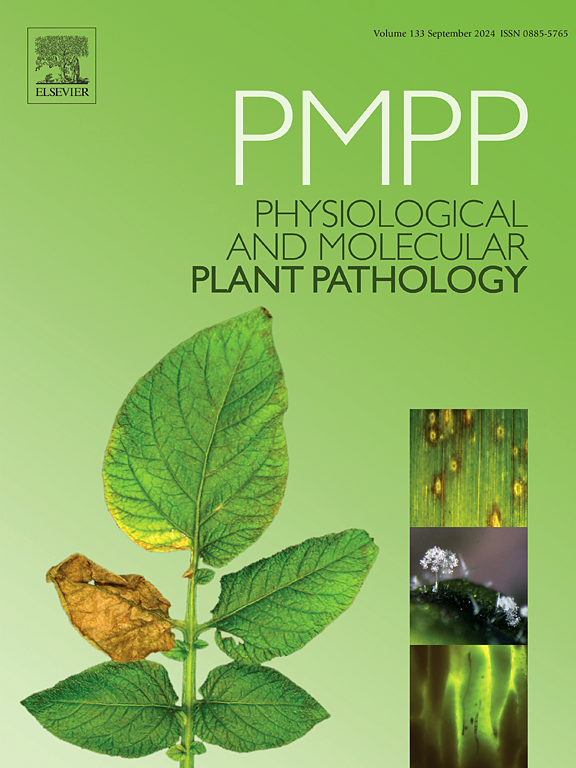Molecular profiling of PLATZ gene family in pepper (Capsicum annuum L.) and overexpression of CaPLATZ6 confers enhanced resistance to anthracnose pathogen, Colletotrichum truncatum L.
IF 2.8
3区 农林科学
Q2 PLANT SCIENCES
引用次数: 0
Abstract
The plant AT-rich sequence and zinc-binding (PLATZ) transcription factors are widely involved in growth, development and stress response. In the present study, we have conducted a genome-wide profiling of PLATZ gene family in pepper (Capsicum annuum) and examined their functions in response to defense hormones and pathogen infection. The pepper genome contains 12 PLATZ genes that could be classified into four groups with each group possessing similar intron-exon structures and motif composition. Cis-element analysis of the promoter regions of the PLATZ genes showed the presence of binding site for proteins responsive to growth and development, light signaling, phytohormones and stress response. CaPLATZ1, 2, 3, 6, 8 and 9 were differentially expressed in response to defense hormones salicylic acid (SA), jasmonic acid (JA) and ethylene (ET) with CaPLATZ6 significantly induced with SA and JA and repressed with ET. qRT-PCR analysis of the PLATZ genes in the resistant pepper cultivar Punjab Lal (PL) and sensitive line Arka Lohit (AL) post treatment with anthracnose pathogen Colletotrichum truncatum (cot) showed that CaPLATZ3 and CaPLATZ6 were significantly induced under incompatible resistant interaction. Furthermore, transgenic pepper plants from the sensitive line AL overexpressing CaPLATZ6 showed enhanced resistance to anthracnose, as revealed by decreased fungal growth and up-regulated expression of defense-responsive genes. These results indicate fresh insights about the expression and likely role of PLATZ genes and their potential application in engineering stress tolerant crops.
求助全文
约1分钟内获得全文
求助全文
来源期刊
CiteScore
4.30
自引率
7.40%
发文量
130
审稿时长
38 days
期刊介绍:
Physiological and Molecular Plant Pathology provides an International forum for original research papers, reviews, and commentaries on all aspects of the molecular biology, biochemistry, physiology, histology and cytology, genetics and evolution of plant-microbe interactions.
Papers on all kinds of infective pathogen, including viruses, prokaryotes, fungi, and nematodes, as well as mutualistic organisms such as Rhizobium and mycorrhyzal fungi, are acceptable as long as they have a bearing on the interaction between pathogen and plant.

 求助内容:
求助内容: 应助结果提醒方式:
应助结果提醒方式:


